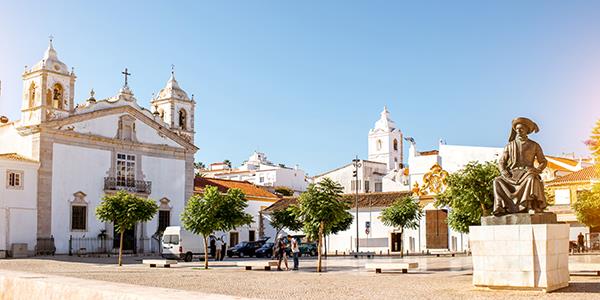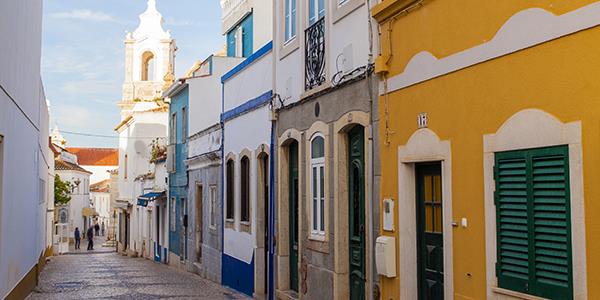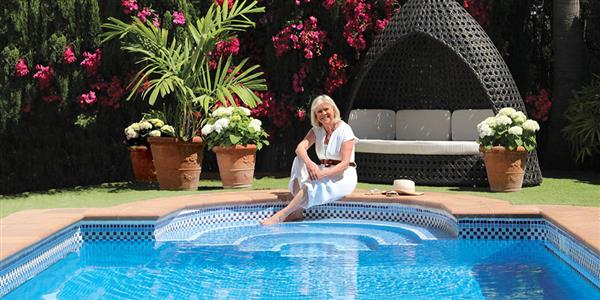
Lagos is a popular town in the Algarve. It sits on the southern coast of Portugal, with a wonderful selection of beaches and scenery, and is a favourite destination for both walks and relaxation.
History
With a long history dating back 2000 years, the city is full of interesting architecture. Its established harbour tempted Roman settlers and it became an important base during Roman rule. Later the Moors, who arrived in the 8th century, became responsible for the construction of Lagos Castle, as a means of fortifying the town. In the 12th century a Christian church was constructed just outside the town’s walls and was to become the oldest church in the Algarve!
Lagos was a crucial centre during the Portuguese Age of Discovery in the 15th century, becoming a popular maritime base. In fact, Henry the Navigator spent a lot of time here and directed many exploration missions from its harbour. It was an important turning point in Portuguese history and a lot of geographical knowledge was gained.
Lagos Castle is a medieval structure that was built because the city was in such a strategic location. During the 16th century it was modernised and strengthened to deter attackers, and remains of the fortified walls still encompass sections of the old town. The city gate of São Gonçalo is very impressive and looks out over the port.

Opposite, almost on the water itself, is another fort called Forte da Ponte da Bandeira and this one was built in the 17th century. If you wander in you’ll find a little chapel decorated with tiles.
The town
Between the 16th and 18th centuries, Lagos really did become quite high-profile. A lot of the buildings from the 17th century still remain, as well as some of the 16th century walls and parts of the castle.

The historic centre of Lagos is all cobbled streets, coloured walls and little buildings. You have to walk through breaks in the Medieval walls to get in and out. There are a number of small churches, like the 16th century Church of São Sebastião with its Gothic details, or the church of Santa Maria which also dates from the 16th century and is located in the Praça do Infante, within sight of the water. The church of Santo António is a stunning 18th century Baroque structure located on a pretty square and facing a line of shops and cafés. Inside there is really impressive gilded woodwork decoration.
The coast
Lagos’ vast beach, Meia Praia, is an impressive 4km-stretch of uninterrupted sand reaching all the way to the mouth of the River Odiáxere further east. Meia Praia is great in the summer, with lots of space for all, but really popular in the winter as well. The Bahia Beach Bar is good for if you fancy a snack; it’s a got a nice atmosphere, does a range of food and sometimes has live music too.
If you like your beach a little more secluded, there are many sandy coves tucked into the rugged cliffs of the coastline further west. Tunnels, arches and coves have been carved by the sea over the years and anywhere you decide to stop is guaranteed to have interesting scenery. Praia dos Estudantes and Praia do Pinhão are close to the Lagos port; at Praia dos Estudantes you’ll see the quirky little bridge, high above the beach that joins the land to a rocky outcropping. From the beach the interesting bridge above your head looks like something that has grown from the rock itself.

Praia do Camilo (pictured top of page) is slightly further round the coast. It is a really beautiful little haunt approached by a flight of steep wooden stairs that descend the cliff side. The charming little nook is encircled by rocky red cliffs and it looks out onto interesting rock formations that rise up out of clear turquoise waters.
Don’t miss
While you’re here, why not take the chance to rent a bike and enjoy a coastal ride? Bike rental places can be found in the narrow, cobbled streets for a reasonable price, and the journey from Lagos to Praia da Luz is a really nice one.
If you’re interested in finding out a little more about this interesting town, the Museu Municipal Dr. José Formosinho can be found in a little side building to the church of Santo António. It details the history of Lagos with a range of interesting artefacts and a scale model.

Find out how you can stay in the glorious Algarve by entering your details below for a free brochure.

